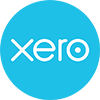What Are Borrowing Expenses?
Borrowing expenses include:
- loan establishment fees;
- title search fees charged by your lender;
- costs for preparing and filing mortgage documents;
- mortgage broker fees;
- stamp duty charged on the mortgage;
- fees for a valuation required for loan approval; and
- lender’s mortgage insurance billed to the borrower.
The following are not borrowing expenses:
- insurance policy premiums on a policy that provides for your loan on the property to be paid out in the event that you die or become disabled or unemployed;
- interest expenses;
- stamp duty charged on the transfer of the property; and
- stamp duty incurred to acquire a leasehold interest in property (such as an ACT 99-year Crown lease).
How to Deduct Borrowing Expenses
If your total borrowing expenses are more than $100, the deduction is spread over five years or the term of the loan, whichever is less. If the total deductible borrowing expenses are $100 or less, they are fully deductible on income tax returns in the income year they are incurred.
If you repay the loan early and in less than five years, you can claim a deduction for the balance of the borrowing expenses in the year the loan is repaid in full.
If you obtained the loan part way through the income year, the deduction for the first year will be apportioned according to the number of days in the year that you had the loan.
Example – Treatment
In order to secure a 20-year loan of $209,000 to purchase a rental property for $170,000 and a private motor vehicle for $39,000, the Changs paid a total of $1,670 in establishment fees, valuation fees and stamp duty on the loan. As the Changs’ borrowing expenses are more than $100, they must be apportioned over five years, or the period of the loan, whichever is the lesser.
Also, because the loan was to be used for both income-producing and non-income producing purposes, only the income-producing portion of the borrowing expenses is deductible.
The Changs obtained the loan on 15 July 2022. Accordingly, they would work out the borrowing expense deduction for the first year (2022-23) as follows:
Borrowing expenses × (number of relevant days in year ÷ number of days in the 5-year period) × (amount of rental property loan ÷ total amount borrowed) = deduction for the year.
[Note that the number of days in the 5-year period includes the additional day in a leap year (in this example, the 2023-24 income year) and cents are ignored.]
The amount of the Changs’ deduction in the first year (2022-23) is:
$1,670 x 351/1,826 x $170,000/$209,000 = $261.
The borrowing expense deductions for the next 4 years would be:
2023-24: $272
2024-25: $271
2025-26: $271
2026-27: $271
The balance ($12) is deductible in 2027-28.
Need More Information?
If you earn income from an investment property and wish to have more clarity on any deductions you might be entitled to, our accountants in Melbourne have the expertise to answer your questions. Contact our accounting firm today to find out how our income tax services can help you.
Managed Accounting Services
Our Newsletter
Article Categories
Select Month
 +61 3 8658 5821
+61 3 8658 5821




